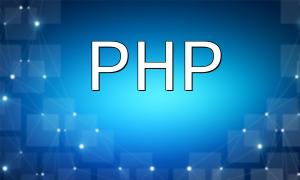When developing PHP applications, it is often necessary to package the entire project into an executable file or installer for easier deployment and distribution. This article explains how to package and deploy PHP programs on Windows, helping you achieve fast application release.
First, install the PHP environment on your Windows system. Visit the official PHP website to download the latest Windows version of PHP and follow the installation instructions. After installation, you can manage PHP packaging and deployment via command line or GUI tools.
PHP projects usually rely on multiple third-party libraries. Composer is the most popular dependency manager in the PHP ecosystem that automates downloading and managing these dependencies.
Create a composer.json file in your project root directory to describe the dependencies. For example:
{
"require": {
"monolog/monolog": "^2.0"
}
}
Then, run this command in the project root directory:
composer install
Composer will automatically install the required libraries. After installation, include these dependencies in your packaging to ensure your app runs correctly in other environments.
Phar (PHP Archive) is a built-in PHP packaging format that bundles multiple PHP files and dependencies into a single executable file, making distribution and deployment easier.
Create a build.php file as follows:
<?php
$phar = new Phar('app.phar');
$phar->startBuffering();
$phar->buildFromDirectory(__DIR__);
$phar->stopBuffering();
$phar->setStub('<?php Phar::mapPhar("app.phar"); include "phar://app.phar/index.php"; __HALT_COMPILER(); ?>');
Then execute the packaging command:
php build.php
This will generate an app.phar file containing all PHP files and dependencies, ready to run directly.
Copy the generated app.phar file to any directory on the target Windows machine. Open the command line, navigate to that directory, and run:
php app.phar
The application will execute and display output and logs in the console.
Following these steps, you can easily package and deploy PHP applications in a Windows environment. By managing dependencies with Composer and packaging with Phar, you simplify deployment and improve portability and distribution efficiency. Hope this guide helps you release your PHP projects smoothly.









